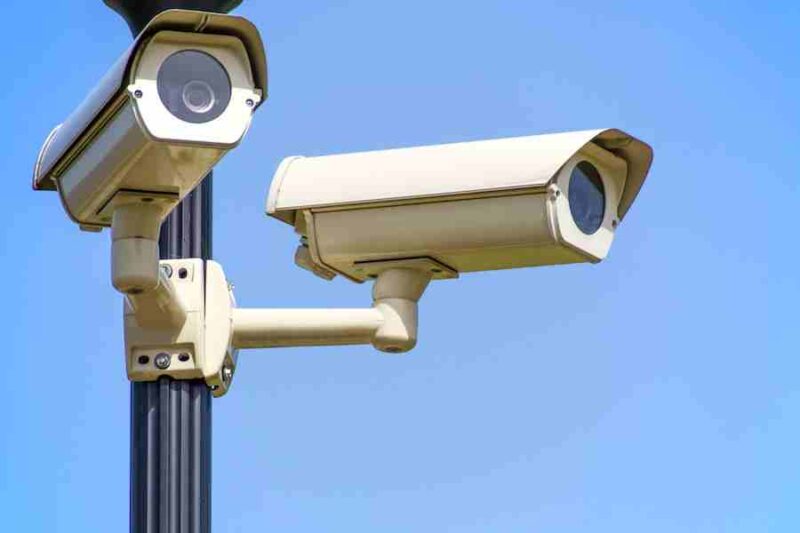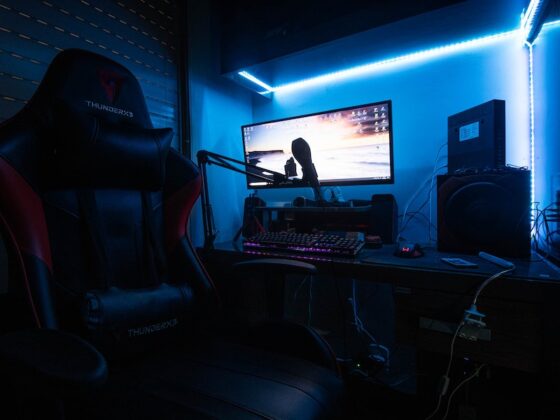Blink cameras have gained popularity for their convenience and affordability in home surveillance systems. While these cameras are known for their motion-activated recording capabilities, the question arises: Can Blink cameras record 24/7? In this article, we explore the functionality of Blink cameras and delve into the limitations and possibilities regarding continuous video recording. Understanding the options available for recording modes and considering alternative solutions will help users make informed decisions about their surveillance needs. Let’s explore the capabilities of Blink cameras and whether they can meet the requirement for round-the-clock video monitoring.
Can Blink Cameras Record 24/7?
Blink cameras are primarily designed for motion-activated recording, and they do not have a built-in 24/7 continuous recording feature. While Blink offers options like the “Record Until Motion Stops” mode, it still relies on motion triggers. To achieve continuous recording, users may need to explore external devices or alternative camera brands that specialize in 24/7 surveillance. It’s important to understand the limitations of Blink cameras and consider other solutions based on specific recording needs.
Importance Of Continuous Video Recording
Continuous video recording ensures that every moment is captured, providing comprehensive coverage of the monitored area. Unlike motion-activated recording, which may miss important events that occur outside the camera’s field of view or during brief intervals between motion triggers, continuous recording guarantees that no event goes unnoticed. This is particularly valuable in high-security environments, such as homes, offices, or public spaces, where a comprehensive and uninterrupted record of activities is essential for later review and analysis.
Continuous recording enables accurate event reconstruction by capturing the full context and sequence of incidents. It allows investigators or security personnel to revisit past events and analyze them in detail, providing valuable insights for identifying culprits, understanding the chain of events, or uncovering crucial evidence. Whether it’s investigating a security breach, reviewing suspicious activities, or resolving disputes, the ability to access continuous video footage is invaluable for obtaining a complete and accurate account of events.
Continuous video recording empowers proactive threat detection and real-time monitoring. By having a constant stream of video footage, security personnel can actively monitor live feeds and identify potential threats or anomalies as they unfold. The continuous recording provides the ability to respond swiftly to suspicious activities, intrusions, or emergencies, enabling timely intervention and mitigation of risks. Additionally, it allows for the implementation of advanced video analytics and algorithms to detect patterns, recognize faces, or trigger alerts based on specific criteria, further enhancing the overall security posture.
Limitations Of Blink’s Continuous Recording Options
While Blink cameras offer motion-activated recording and some limited continuous recording options, there are several limitations to be aware of:
- Dependence on Motion Triggers: Blink’s continuous recording options, such as the “Record Until Motion Stops” mode, still rely on motion triggers to initiate and cease recording. This means that if there is no motion detected, the camera will stop recording, potentially resulting in gaps in the footage. It may not capture non-motion-related events or activities occurring outside the camera’s motion detection range.
- Increased Power Consumption: Continuous recording requires a significant amount of power, which can drain the battery life of Blink cameras relatively quickly. Blink cameras are designed to conserve power by primarily relying on motion-activated recording, so continuous recording can be a drain on the camera’s battery, requiring more frequent recharging or battery replacements.
- Limited Storage Capacity: Blink cameras typically utilize cloud storage for video footage, and continuous recording generates large amounts of data. As a result, the limited storage capacity provided by Blink’s cloud service may not be sufficient to accommodate extended periods of continuous recording. Users may need to either upgrade their subscription plans or find alternative storage options to maintain continuous recording for an extended period.
- Potential Bandwidth Constraints: Continuous recording generates a constant stream of data that needs to be uploaded to the cloud. This can put a strain on the available bandwidth, especially if multiple Blink cameras are in use within a network. Users with limited or unstable internet connections may experience difficulties in maintaining a smooth and consistent upload of continuous footage.
- Cost Considerations: While Blink cameras are known for their affordability, continuous recording may incur additional costs. Extended periods of continuous recording may require higher-tier subscription plans, which come with increased monthly fees. Users should carefully evaluate their budget and storage needs to determine if the added cost of continuous recording aligns with their requirements.
Alternative Options For Continuous Recording
- Dedicated Surveillance Systems: Consider investing in dedicated surveillance systems that specialize in 24/7 continuous recording. Many reputable brands offer cameras specifically designed for continuous monitoring, with features such as large storage capacities, advanced video compression algorithms, and seamless integration with network video recorders (NVRs). These systems often provide the flexibility to customize recording schedules, adjust video quality, and support multiple cameras for comprehensive coverage.
- Hybrid Systems: Another option is to create a hybrid system by combining Blink cameras with other camera brands that offer continuous recording capabilities. By integrating Blink cameras for motion-activated recording in specific areas and incorporating other cameras for continuous monitoring, users can strike a balance between capturing critical events and maintaining constant surveillance. This hybrid approach allows for a cost-effective solution while ensuring the necessary coverage and flexibility in recording options.
- External Recording Solutions: External recording devices can be used in conjunction with Blink cameras to enable continuous recording. For example, users can connect an external storage device, such as a Network Attached Storage (NAS) system or a digital video recorder (DVR), to the Blink camera system. This allows for additional storage capacity and continuous recording beyond Blink’s native capabilities. However, it’s important to ensure compatibility and proper configuration of the external device with the Blink cameras for seamless operation.
Exploring these alternative options can provide users with the opportunity to achieve continuous recording while still leveraging the convenience and affordability of Blink cameras. Assessing specific needs, budget constraints, and technical requirements will help determine the most suitable alternative for achieving continuous surveillance.
Extended Recording Solutions
Extended recording solutions can be utilized to achieve a continuous recording with Blink cameras. Here are three potential options for extending the recording capabilities:
- External Storage Devices: Users can connect external storage devices, such as USB drives or microSD cards, to Blink cameras to expand their recording capacity. By configuring the Blink camera system to store footage directly on the external device, users can extend the recording duration beyond the limitations of Blink’s built-in storage or cloud storage options. However, it’s important to ensure compatibility and choose storage devices with sufficient capacity and reliable performance.
- Network Attached Storage (NAS): Integrating a NAS device into the surveillance setup can provide ample storage for continuous recording. A NAS acts as a central storage hub that connects to the local network and allows Blink cameras to save footage directly to its storage drives. This solution offers scalability, flexibility, and the ability to access recordings from multiple devices within the network. Users can choose NAS systems with suitable storage capacities based on their recording requirements.
- Third-Party Recording Services: Utilizing third-party recording services can offer extended storage capabilities for Blink cameras. These services typically provide cloud storage with larger capacities and longer retention periods compared to Blink’s native cloud storage options. By subscribing to a compatible third-party service, users can configure their Blink cameras to upload footage directly to the external cloud storage, ensuring continuous recording without worrying about storage limitations.
It’s essential to consider the specific technical requirements, compatibility, and costs associated with each extended recording solution. Users should thoroughly research and evaluate the options to determine the most suitable solution that aligns with their needs for continuous recording with Blink cameras.
Conclusion
In conclusion, while Blink cameras do not offer built-in 24/7 continuous recording, understanding their limitations and exploring alternative options can help users achieve continuous surveillance. The continuous recording provides comprehensive coverage, and accurate event reconstruction, and enables proactive threat detection. Users can consider dedicated surveillance systems, hybrid setups combining Blink cameras with continuous recording cameras, or utilizing external storage devices such as USB drives or NAS devices. Additionally, third-party recording services can offer extended cloud storage capabilities. By evaluating individual requirements and selecting the appropriate extended recording solution, users can ensure continuous monitoring that aligns with their surveillance needs.
FAQ’s
Can I Record 24/7 With Blink Cameras?
No, Blink cameras do not have a built-in feature for continuous 24/7 recording. They primarily operate on motion-activated recording, capturing footage when motion is detected within their field of view.
Can I Extend The Recording Time Of Blink Cameras?
Yes, you can extend the recording time of Blink cameras by using external storage devices such as USB drives or microSD cards. These devices can be connected to the camera system to increase the storage capacity and allow for longer recording durations.
Are There Alternative Camera Brands That Offer 24/7 Recording?
Yes, there are other camera brands available in the market that specialize in 24/7 continuous recording. These brands often offer dedicated surveillance systems with features like larger storage capacities, advanced video compression, and seamless integration with network video recorders (NVRs) to support continuous monitoring.
Can I Integrate Blink Cameras With Other Cameras For Continuous Recording?
Yes, you can create a hybrid system by integrating Blink cameras with other camera brands that support continuous recording. This combination allows you to have motion-activated recording from Blink cameras in specific areas and continuous recording from the other cameras, providing a balance between event-triggered and constant surveillance.
Are There Third-Party Recording Services Compatible With Blink Cameras?
Yes, there are third-party recording services that are compatible with Blink cameras. These services offer extended cloud storage capabilities, allowing you to upload and store footage from Blink cameras for longer durations. Subscribing to such services can provide you with the option for continuous recording beyond the limitations of Blink’s native cloud storage.










